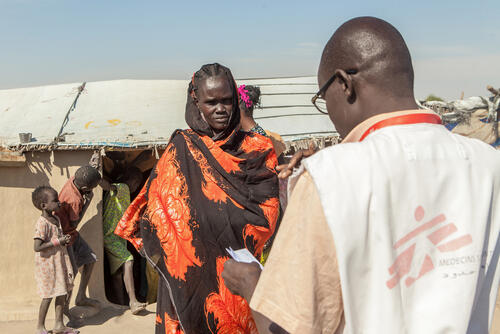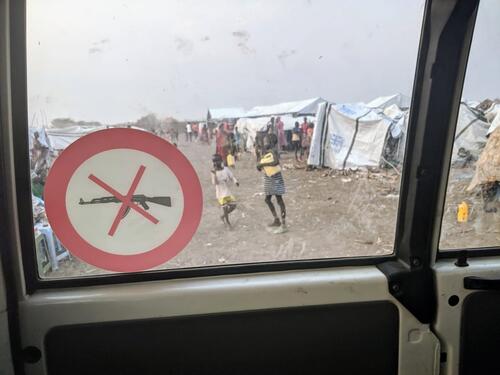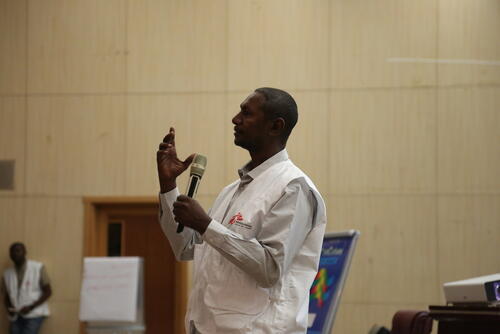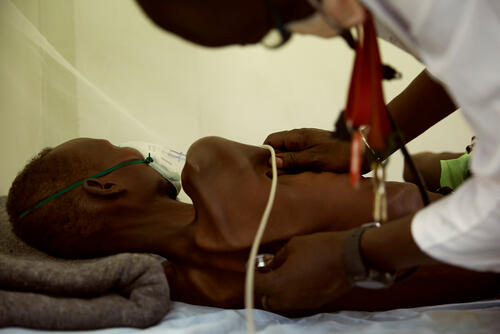In December 2019, MSF opened a new 85-bed hospital in White Nile state, Sudan, upgrading the existing services in order to strengthen the quality of healthcare provided to South Sudanese refugees and the local community. The hospital, in Al Kashafa refugee camp, provides primary and secondary healthcare for patients with complicated conditions, including severely malnourished children and people with chronic infectious diseases, such as HIV and tuberculosis (TB). Here are four things you should know about South Sudanese refugees in Sudan.
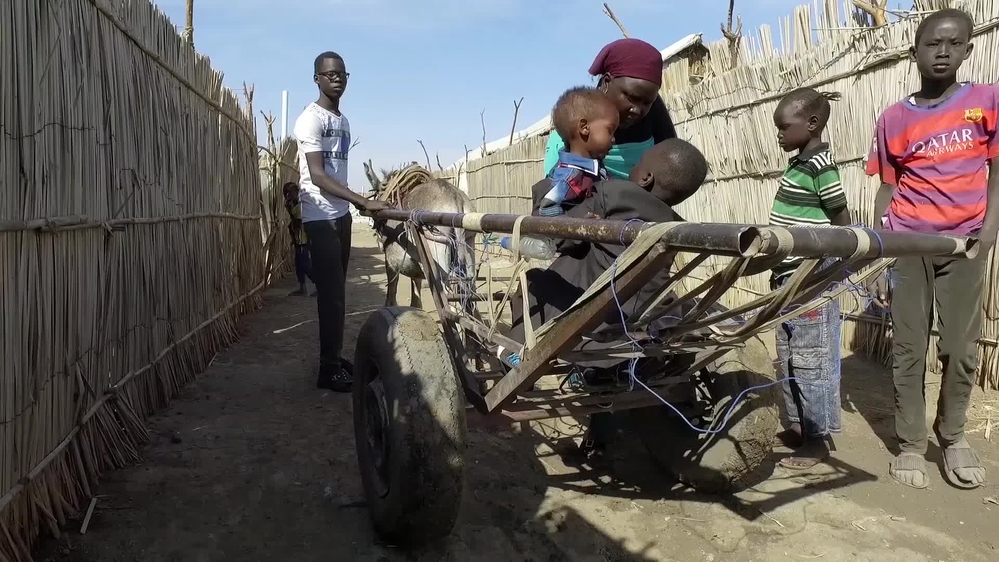
New hospital in Al Kashafa
1. Sudan still hosts huge numbers of South Sudanese
Roughly 2.2 million South Sudanesehttps://data2.unhcr.org/en/situations/southsudan currently live forcibly displaced in neighbouring countries after fleeing the civil war. Today, according to UNHCR, Sudan is home to more than 861,000 South Sudanese refugees, second in number only to Uganda.
“In 2017, I came to White Nile with 18 members of my family because of the war. It took us a month to reach Sudan by foot. It was difficult and some of our young children died on the way because there was not enough food and water, and from exposure to the sun,” says Julia Odok, 24, a South Sudanese refugee from Malakal.
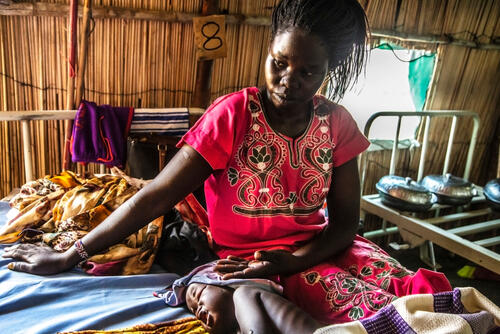
Lino Ernest, a doctor who has worked with MSF in Sudan for three years, remembers: “After the crisis in South Sudan, I found myself as a refugee with my family. Everything was destroyed in my region [Upper Nile]. We lost everything, including our house. We came here just with our lives and we had a welcoming response from the local community.”
The largest community of South Sudanese refugees in Sudan is in Khartoum state and almost all Sudanese states that border South Sudan have significant numbers. White Nile state hosts 248,000 refugeeshttps://data2.unhcr.org/en/situations/southsudan/location/1904 , with 162,000 living in camps like Al Kashafa.
Despite the ongoing peace process in South Sudan, there has not been a significant decrease in the number of refugees in White Nile. Many say they hope to return home to their normal lives, but they prefer to stay in Sudan until the situation calms down.
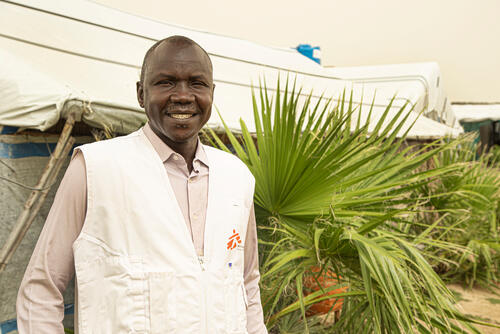
2. Humanitarian needs in the camps are immense
Health and humanitarian needs in the refugee camps remain high and it is crucial to continue assisting the refugees and the local communities that host them. Some of the main challenges in the camps are the availability of potable water, a lack of paid work, limits on movement and insufficient food.
Health promotion teams play a big role in the community.
“We go and find out malnourished children in the camps and guide families to the hospital. We create awareness about diseases like cholera, TB, HIV and malaria,” says Butrus Kwathi, a health promotion supervisor. Teams visit busy places like churches, mosques, schools, water points and also go from house to house.
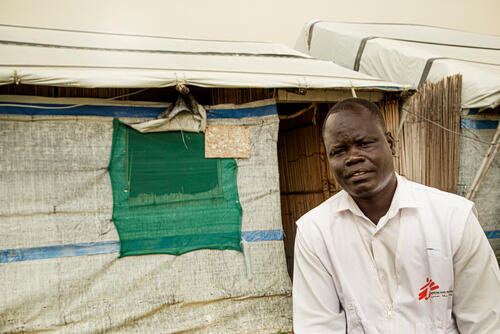
“Life is difficult. We have nothing: no house, no money and no job,” says Julia. “The only thing you can do is to sit and wait. We get lentils and sorghum on a monthly basis, but nothing else. We can’t eat lentils every day. This leaves children vulnerable to diseases.”
3. Most diseases are linked to poor living conditions
Patients come to the MSF hospital from Al Kashafa and eight other nearby camps, as well as from surrounding villages. Most of the medical conditions MSF teams see in White Nile state are caused by refugees’ poor, overcrowded living conditions, such as malnutrition, diarrhoea, respiratory tract infections (including TB), malaria and skin diseases.
In 2019, MSF carried out nearly 120,000 consultations in Al Kashafa – almost 10,000 a month – and admitted more than 5,000 patients. Sixty-three per cent of the patients seen in the triage area were refugees.
MSF helped over 670 women give birth, almost two babies every day. We enrolled 196 new patients on to our TB programme and 94 on to our HIV programme.
The experiences of the conflict, witnessing and suffering violent events, together with the challenges of living as refugees and the uncertainty about their future has left many with mental health issues.
“We provide people with psychosocial support until they feel safe, until they can return to normal life and reintegrate back into society,” explains Alfatih Alsadig, mental health counsellor.
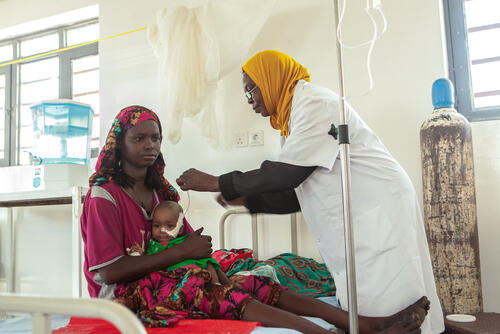
4. Recurring spikes in malnutrition
Insufficient access to food, combined with poor living conditions and other factors, leads to seasonal spikes in malnutrition.
“Malnutrition admissions increase from June to September. It is the so-called ‘hunger gap’, the rainy season when there is nothing to harvest,” says Zakina Adam, nutritional supervisor.
The MSF hospital in Al Kashafa has the only malnutrition stabilisation centre in the area. In 2019, nearly 1,000 severely malnourished children under the age of five were treated there.
“Some malnourished children come with other medical issues, such as chronic diarrhoea, pneumonia or skin diseases. This makes their condition worse. Some come with their whole body swollen [oedema], which can lead to sepsis,” says Zakina.
She adds that sometimes babies under six months are admitted as their mothers are not breastfeeding properly.
“We arrange sessions to teach them, as it is very important for the babies. My job is to try to make people understand what children need. When I can’t do anything for the child [to survive], I get very sad.”
MSF has been working in White Nile state since 2014, following a massive influx of South Sudanese refugees fleeing the civil war. Since then, we have implemented activities, including vaccination campaigns, emergency responses and management of health facilities.
Services in Al Kashafa also include blood transfusion, emergency room, maternal, paediatric and neonatal care, and sexual and reproductive health, including care for survivors of sexual violence. Severe trauma patients and pregnant women requiring a caesarean-section are taken from Al Kashafa to hospitals in Kosti and Al Jabaleen respectively.
MSF has worked in Sudan since 1978. Over the past few years, our operations have focused on six states: Al Gedaref, South Kordofan, East Darfur, North Darfur, White Nile and Khartoum, with emergency teams launching interventions in other areas as needed. MSF runs health facilities where it provides free, good-quality medical care to refugees, internally displaced people and host communities.



